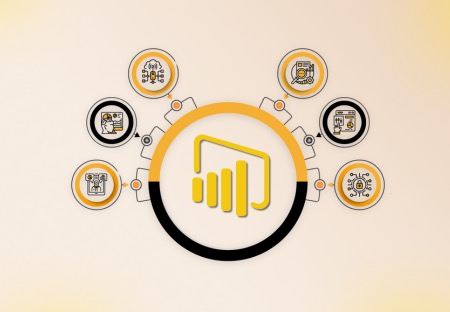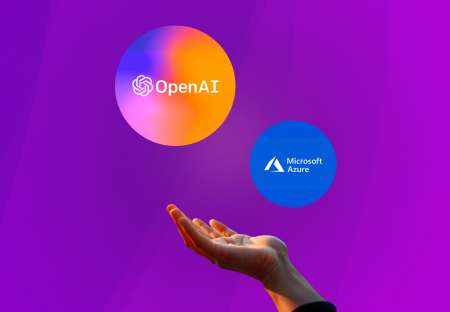In today’s fast-paced business environment, supply chain management plays a crucial role in ensuring operational efficiency and customer satisfaction. With the advent of technology, businesses are constantly seeking innovative solutions to optimize their supply chain processes. One such solution that has been gaining traction is Power BI, a powerful business analytics tool developed by Microsoft. In this blog post, we will explore how Power BI is revolutionizing supply chain management insights and empowering businesses to make data-driven decisions.
Understanding the Power of Data Visualization in Supply Chain Management :
Data visualization is a key component of supply chain management as it allows businesses to gain insights from vast amounts of data quickly and effectively. With Power BI‘s intuitive interface and interactive visualizations, supply chain managers can easily analyze complex data sets, identify trends, and make informed decisions in real-time.
Streamlining Inventory Management with Power BI:
Effective inventory management is critical for optimizing supply chain performance and reducing costs. Power BI enables businesses to track inventory levels, monitor stock movements, and forecast demand more accurately. By integrating data from various sources such as ERP systems and IoT devices, Power BI provides a comprehensive view of inventory across the entire supply chain.
Enhancing Supplier Relationship Management :
Maintaining strong relationships with suppliers is essential for ensuring timely deliveries and mitigating risks in the supply chain. Power BI enables businesses to analyze supplier performance metrics such as on-time delivery rates, quality issues, and lead times. By identifying areas for improvement, businesses can collaborate more effectively with suppliers and drive better outcomes.
Optimizing Transportation and Logistics Operations :
Transportation and logistics are critical components of the supply chain that can significantly impact overall performance. Power BI helps businesses optimize route planning, track shipment status in real-time, and identify opportunities for cost savings. By leveraging geospatial analytics and predictive modeling, businesses can streamline transportation processes and improve delivery efficiency.
Predictive Analytics for Demand Forecasting :
Accurate demand forecasting is essential for minimizing stockouts, reducing excess inventory, and improving customer satisfaction. Power BI enables businesses to leverage predictive analytics algorithms to forecast demand more accurately based on historical sales data, market trends, and external factors. By incorporating machine learning models into supply chain management, businesses can anticipate demand fluctuations and adjust their operations accordingly.
Monitoring Key Performance Indicators (KPIs) in Real-Time :
Tracking key performance indicators (KPIs) is crucial for measuring the effectiveness of supply chain operations and identifying areas for improvement. Power BI provides customizable dashboards and reports that allow businesses to monitor KPIs in real-time, such as order fulfillment rates, inventory turnover, and supplier performance metrics. By visualizing KPI data, businesses can identify trends, set performance targets, and drive continuous improvement initiatives.
Identifying Supply Chain Risks and Opportunities :
Supply chain disruptions can have significant consequences on business operations, ranging from delays in production to increased costs. Power BI enables businesses to proactively identify and mitigate supply chain risks by analyzing data from various sources, such as weather forecasts, geopolitical events, and supplier performance metrics. By identifying potential risks early, businesses can implement contingency plans and minimize the impact on operations.
Improving Forecast Accuracy with Advanced Analytics:
Traditional forecasting methods often rely on historical data and manual calculations, which can lead to inaccuracies and inefficiencies. Power BI offers advanced analytics capabilities, such as time series analysis and exponential smoothing, to improve forecast accuracy and reliability. By incorporating advanced analytics into demand forecasting processes, businesses can reduce forecast errors, optimize inventory levels, and improve overall supply chain performance.
Driving Continuous Improvement with Data-Driven Insights:
Continuous improvement is a core principle of supply chain management that requires ongoing analysis and optimization of processes. Power BI provides businesses with actionable insights derived from data analysis, enabling them to identify opportunities for efficiency gains, cost savings, and process optimization. By empowering decision-makers with data-driven insights, Power BI facilitates a culture of continuous improvement within the organization.
Conclusion :
In conclusion, Power BI is revolutionizing supply chain management insights by enabling businesses to leverage data analytics for better decision-making and operational excellence. From inventory management to demand forecasting, Power BI offers a wide range of features and capabilities that empower businesses to optimize their supply chain processes, improve efficiency, and drive competitive advantage in today’s dynamic marketplace. By harnessing the power of Power BI, businesses can unlock new opportunities for growth and innovation in their supply chain operations.











